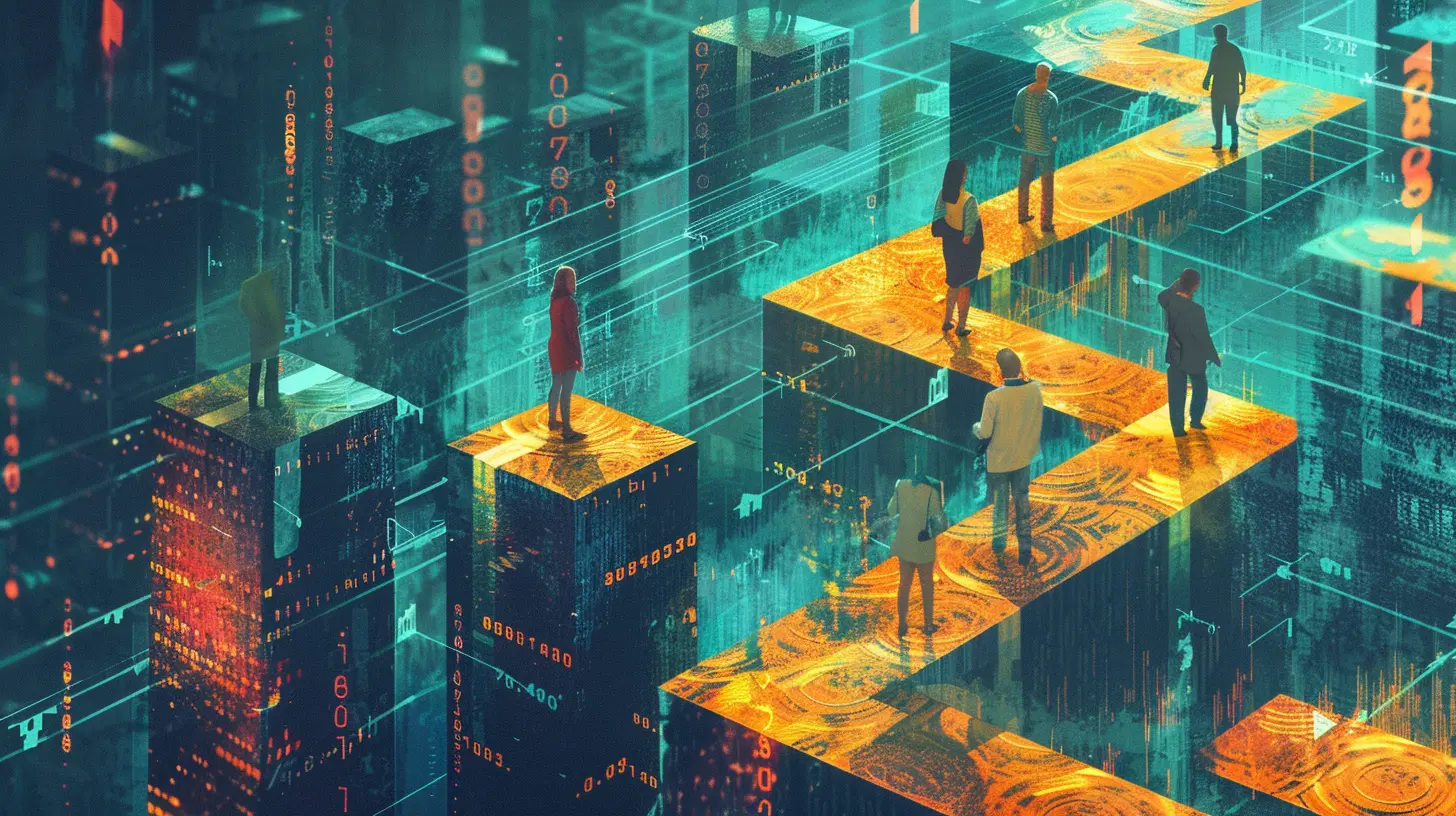How the Digital Economy Is Creating New Forms of Inequality
7 October 2025
The digital economy is everywhere—and let’s be honest, it’s pretty great in a lot of ways. Thanks to advancements in technology, we can have groceries delivered to our doorstep, connect with loved ones through video calls, and even run businesses from the comfort of our homes. But, like most things, the rise of the digital economy isn’t all sunshine and rainbows. Beneath the surface of progress lies a growing issue that most people don’t talk about enough: inequality.
Yep, the same innovations that make life more convenient and exciting also widen the gap between the haves and the have-nots. Today, we’re going to dive into how the digital economy is creating new forms of inequality, explore who’s being left behind, and brainstorm what can be done about it. So, grab a cup of coffee, and let’s unpack this fascinating yet troubling topic together. 
What Is the Digital Economy?
Before we dissect the inequality piece, let’s make sure we’re all on the same page about what the digital economy actually is. At its core, the digital economy refers to all the economic activity powered by digital technologies. Think e-commerce, fintech, digital marketing, remote work, online education—you name it.It’s everywhere, and it’s growing like crazy. To put it into perspective, a report by the World Economic Forum estimated that over 60% of global GDP will be digitized by 2025. That’s mind-blowing, right? But while these advancements are exciting, they also come with baggage, especially when you consider how unevenly these benefits are distributed across different groups.
A Tale of Two Worlds: Winners vs. Losers
Let’s cut to the chase—technology is creating two very different worlds. On one hand, you’ve got the winners: tech innovators, skilled professionals, and forward-thinking businesses that thrive in a digital-first world. On the other hand, there are the losers: people and communities struggling to keep up, whether it’s due to lack of access, outdated skills, or systemic barriers.The Digital Divide
Ever heard of the term “digital divide”? It’s a fancy way of saying not everyone has the same access to technology and the internet. For example, while you’re reading this on your smartphone or laptop, someone else might still be using their old flip phone—or worse, they might not have internet access at all.According to a 2021 report by the International Telecommunication Union, nearly 3 billion people worldwide still don’t have internet access. That’s almost 40% of the global population! And guess what? Most of them are in developing countries or marginalized communities.
Without access to the internet, people miss out on basic opportunities like education, remote jobs, and even simple things like paying bills online. It’s like trying to compete in a marathon while wearing flip-flops—nearly impossible.
Skills Gap: The New Currency Is Knowledge
In the digital economy, knowledge is the new currency. Knowing how to code, analyze data, or manage online campaigns is like holding a golden ticket. But what happens to those who don’t have these skills? They get left behind.Think about it—automation and artificial intelligence (AI) are replacing jobs at an alarming rate, particularly in industries like manufacturing, retail, and customer service. The workers in these sectors often lack the skills to transition into tech-heavy roles, which means they’re hit hardest by job displacement.
For example, a factory worker whose job gets replaced by a robot may not have the training or resources to switch to a remote IT job. And let’s be real, learning to code isn’t something you just pick up overnight—it requires time, resources, and education, which aren’t equally available to everyone.
Wealth Inequality: The Rich Get Richer
If technology is a ladder, some people are climbing it to new heights, while others aren’t even on the first rung. The digital economy has drastically increased wealth inequality, with tech giants and investors pocketing billions while the average worker struggles to keep up.Take Big Tech companies like Amazon, Apple, Microsoft, and Google, for example. They dominate entire industries, amass staggering amounts of wealth, and create monopolistic ecosystems that are nearly impossible for small businesses to compete with. While their CEOs make headlines for building rocket ships, many gig workers and delivery drivers—who help power these digital ecosystems—barely make enough to get by.
The rise of gig platforms like Uber and DoorDash hasn’t helped much either. Sure, they create flexible job opportunities, but they often come at the cost of job security, benefits, and fair pay. It’s like trading a steady paycheck for a set of juggling balls—unstable and exhausting. 
A Broader Look at Systemic Inequality
Now, let’s zoom out for a second. Digital inequality doesn’t just happen in a vacuum; it mirrors and amplifies existing systemic inequalities like race, gender, and geography. Technology might be neutral, but the systems we build around it often aren’t.Gender and Race Disparities
Women and minorities are disproportionately affected by digital inequality. For instance, a 2020 report by the United Nations revealed that women are 20% less likely than men to be online, especially in developing countries.And while tech companies promote the idea of diversity and inclusion, their leadership boards often tell a different story. A lack of representation at decision-making levels only reinforces biases in tech development, from AI algorithms to hiring practices. It’s like trying to design a rocket, but only engineers with the same background and perspective are allowed in the room.
Geographic Barriers
Let’s not forget how location plays a role. Rural areas often lack the infrastructure for high-speed internet, leaving entire communities disconnected. It’s like living in the 21st century but being stuck with 20th-century tools.On top of that, people in low-income countries often face higher costs for access. For them, a monthly internet bill might be equivalent to half their paycheck. No wonder so many people remain offline—they simply can’t afford to plug into the digital economy. 
What Can Be Done?
Okay, so we’ve talked about the problem. Now, let’s shift gears and focus on solutions. How can we bridge these gaps and create a more inclusive digital economy?1. Expand Internet Access
Governments and organizations need to make internet access a priority. Initiatives like Elon Musk’s Starlink project aim to bring internet to remote areas, which is a good start. But we also need affordable solutions for low-income families, so no one is priced out of the digital revolution.2. Prioritize Digital Education
Education is key. Schools and communities should focus on teaching digital literacy and tech skills early, so students are better prepared for the jobs of the future. And let’s not forget adult education programs—because learning doesn’t stop when you graduate.3. Invest in Diversity
Tech companies need to do a better job of promoting diversity, both in their workforce and in their products. This means hiring more women and minorities in leadership positions and ensuring that technology is designed with inclusivity in mind.4. Support Gig Workers
The gig economy is here to stay, but that doesn’t mean it can’t be improved. Governments and companies should work together to provide benefits, protections, and fair wages for gig workers. After all, they’re the backbone of many digital businesses.Final Thoughts
The digital economy has the potential to do incredible things, from lifting people out of poverty to revolutionizing entire industries. But, like any powerful tool, it needs to be wielded responsibly. If we’re not careful, the digital economy could widen the gap between the privileged and the disadvantaged even further—leaving millions behind in its wake.The good news? It’s not too late to turn things around. By addressing issues like access, education, and systemic inequality, we can build a digital future that works for everyone—not just a select few.
So, what do you think? Are we up for the challenge?
all images in this post were generated using AI tools
Category:
Income InequalityAuthor:

Zavier Larsen
Discussion
rate this article
1 comments
Sylvan Vasquez
While the digital economy promises innovation, it often deepens divides, privileging the tech-savvy and leaving others behind. True progress requires bridging this growing chasm, not widening it.
October 7, 2025 at 11:37 AM

Zavier Larsen
Thank you for highlighting this crucial concern. Bridging the digital divide is essential for ensuring that the benefits of the digital economy are inclusive and equitable for all.


